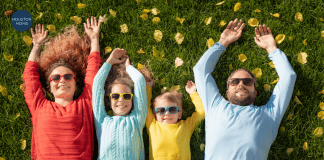November is National Adoption Month! Although most people have heard about adoption or may know someone affected by adoption, the adoption process can be a complicated mystery. As an experienced adoption professional, I am here to demystify the world of adoption, teach you the basics, and give some resources for where to begin if you are interested in exploring more.
 Adoption Terms
Adoption Terms
First things first, let’s define some terms from the adoption world.
Expectant mother/parent: A pregnant woman who is making an adoption plan for her child
Birth family or First family: Referring to a child’s family of origin or family they were born to.
Placement: When a child is physically brought to a family, sometimes referring to the legal date of adoption
Transracial adoption: An adoption where the race of the child is different than the race of the family.
Adoptee: a person who was/is adopted.
Types of Adoption
There are three main types of adoption you may encounter. Here are the basics of each type.
Domestic Adoption: This type of adoption typically involves adopting a newborn or infant from the United States. In most cases, a woman (or person) who is pregnant makes a plan to place their child for adoption while they are pregnant and then chooses a family for that child. Families should expect to maintain some type of relationship with the birth family, depending on their desire for contact after placement. Families can work with an agency, or with a lawyer.
International Adoption: This type of adoption involves adopting a child from another country. Families are required to work with an agency that is licensed to work in that particular country. Most children available for adoption will be older, or have medical or mental health needs. Families will need to travel to the child’s country of birth for placement.
Foster Care Adoption: This type of adoption involves adopting a child that is in the care of DFPS in Texas. These children are typically older, part of a sibling group, and/or have medical or mental health needs. Families can choose to work with an agency, or directly with DFPS. The state of Texas covers most fees for adoption from foster care, so it is an affordable option. When working with an organization, be sure to ask if adoption only is an option, or if they require families to be a foster family before they can adopt.
Things to Consider as You Explore the Adoption Process
Research the requirements to make sure your family qualifies. Some countries have age limits or won’t work with gay couples. Some types of adoption may be too expensive for your family. Many families with children will have a hard time finding a placement of an infant, as expectant mothers often want to place with families who have infertility.
Research the type of child you are thinking of adopting. If you plan to adopt internationally or from foster care, you are likely getting placement of a child with a significant history of trauma. While your agency should prepare you for this, when you are just beginning the adoption process, be sure you are up for the challenge you are about to embark on. This may rule out some programs or types of adoption for your family.
Explore the experience of adult adoptees. Adoption is complex, and has many layers. Adult adoptees are the experts of their own experiences and there is much to learn from them. Seek out podcasts, books, videos of adult adoptees sharing their experiences, and let this inform yours.
Consider transracial adoption thoroughly. Adopting a child of a different race than your family brings another layer of parenting responsibilities, things to learn, communities to connect with, and a big dose of humility, particularly if you are a white family adopting a child of color, which research shows is most common. It is not enough that you personally are ok parenting a Black or brown child. Do your research to find out what that actually looks like. Talk to parents who are doing it. Examine your community to see what role models and racial mirrors will be available for that child. Do the homework.
Resources
To help with that homework, here are some resources for you to explore:
Child Welfare Information Gateway
https://www.childwelfare.gov/topics/adoption/
The Gladney Center for Adoption
https://www.adoptionsbygladney.com
North American Council on Adoptable Children
https://nacac.org/help/how-to-adopt/
National Council for Adoption
Adoption Knowledge Affiliates
https://www.adoptionknowledge.org/













